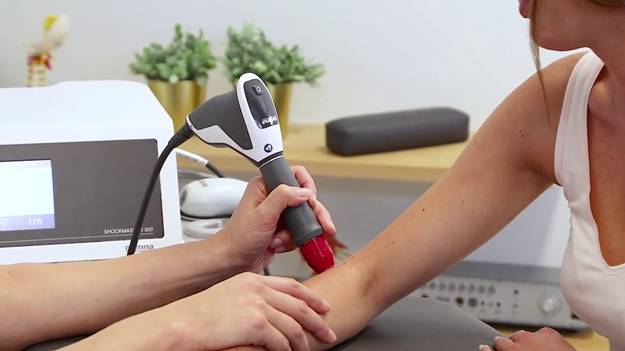In 2024, the field of orthopedic surgery has seen significant advancements in the treatment of arm injuries. From minimally invasive techniques to cutting-edge regenerative therapies, the latest innovations aim to improve outcomes, reduce recovery times, and provide more personalized care. Below, we explore these new developments, along with the most frequently asked questions and their answers.
Minimally Invasive Procedures
Minimally invasive surgery (MIS) has become the standard in orthopedic care, offering reduced trauma, smaller incisions, and quicker recovery times compared to traditional open surgeries. For arm injuries, advancements in arthroscopic techniques allow surgeons to perform complex procedures with minimal invasion. These include repairs of the rotator cuff, treatment of elbow fractures, and even partial joint replacements. The precision of these techniques has been further enhanced by the use of advanced imaging technologies, leading to better outcomes and longer-lasting results.
Robotic-Assisted Surgeries
Robotic-assisted surgery continues to be a game-changer in orthopedics. In 2024, these systems have become more refined, providing surgeons with unparalleled accuracy and control. For arm injuries, robotic systems are particularly useful in procedures that require precise placement of implants, such as elbow and shoulder replacements. The integration of pre-operative imaging with real-time data during surgery ensures that the implants are positioned optimally, reducing the risk of complications and enhancing recovery.
3D Printing for Custom Implants
3D printing technology has revolutionized the production of custom implants tailored to the patient’s anatomy. This is especially beneficial for complex arm fractures or deformities where standard implants may not be sufficient. Custom implants made through 3D printing offer a better fit, improving the healing process and reducing the likelihood of post-surgical complications. Additionally, surgeons can use 3D-printed models of the patient’s anatomy to plan and practice the surgery, further improving precision and outcomes.
Regenerative Medicine: Stem Cell Therapy and PRP
Regenerative medicine has gained traction as a non-surgical alternative for treating arm injuries. Stem cell therapy and platelet-rich plasma (PRP) injections are two of the most promising treatments. These therapies utilize the body’s natural healing processes to repair damaged tissues, reduce inflammation, and restore function. Stem cell therapy is particularly effective for cartilage repair in joints like the shoulder, while PRP is commonly used to treat tendon injuries, such as those affecting the rotator cuff.
Advanced Physical Therapy and Rehabilitation
Post-injury rehabilitation has also seen significant advancements. The integration of virtual reality (VR) and telerehabilitation into physical therapy programs allows patients to engage in immersive and guided exercises from the comfort of their homes. These technologies not only improve adherence to rehabilitation protocols but also enhance patient outcomes by providing real-time feedback and motivation.
Emerging Diagnostic Tools
Early and accurate diagnosis is critical for successful treatment. In 2024, advanced imaging techniques like high-resolution MRI and 3D CT scans provide detailed views of musculoskeletal injuries, helping to identify issues that might be missed with traditional methods. Wearable sensors have also become a valuable tool in monitoring the progress of recovery, providing continuous data on joint movement and healing.
Frequently Asked Questions (FAQs)
Q1: What are the benefits of robotic-assisted surgery for arm injuries?
Robotic-assisted surgery provides greater precision and control, which is crucial for complex arm procedures. This leads to better implant placement, fewer complications, and faster recovery times.
Q2: How does 3D printing improve outcomes in orthopedic surgeries?
3D printing allows for the creation of custom implants that perfectly match the patient’s anatomy, improving the fit and function of the implant and reducing the risk of complications.
Q3: What is stem cell therapy, and how does it help with arm injuries?
Stem cell therapy involves injecting stem cells into the injured area to promote tissue regeneration and healing. It is particularly useful for repairing cartilage and treating chronic conditions like osteoarthritis.
Q4: Can PRP therapy be used for all types of arm injuries?
PRP therapy is most effective for soft tissue injuries, such as tendinitis and muscle tears. It accelerates healing and reduces pain but may not be suitable for all types of injuries.
Q5: What are the latest advancements in physical therapy for arm injuries?
The integration of virtual reality and telerehabilitation has transformed physical therapy, offering patients interactive and personalized rehabilitation experiences that enhance recovery.
Q6: How do wearable sensors help in the treatment of arm injuries?
Wearable sensors provide continuous monitoring of joint movements, helping both patients and healthcare providers track progress and make informed decisions about treatment adjustments.
Conclusion
The innovations in orthopedic treatments for arm injuries in 2024 emphasize precision, personalization, and minimally invasive approaches. Whether through robotic surgery, custom implants, or regenerative medicine, these advancements are designed to improve patient outcomes, reduce recovery times, and enhance the overall quality of care. As technology continues to evolve, patients can expect even more refined and effective treatment options in the near future.
These advancements demonstrate the collaborative efforts between orthopedic specialists and technological innovators, driving forward the capabilities of modern medicine and offering new hope to patients suffering from arm injuries.





